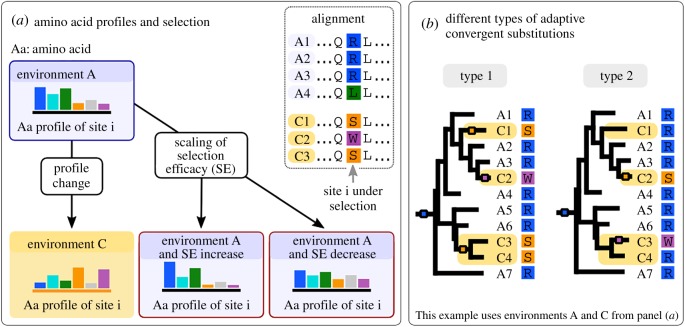Figure 1.
Categories of adaptive and non-adaptive convergent amino acid evolution. (a) At a particular position in a protein, some amino acids provide better fitness than others. This is represented by coloured bars for six amino acids, the bigger the bar the higher the fitness. In the ancestral environment A, amino acids blue and green provide the highest fitness, whereas in the convergent environment C, amino acids orange and purple provide the highest fitness. Increasing the selection efficacy makes the profiles more pointed, while decreasing it makes them more flat, but the amino acid relative rank does not change. Decreases of the selection efficacy are not adaptive, while the two other types of changes are. (b) Species with the convergent phenotype are named C* and species with the ancestral phenotype are named A*. Substitutions are represented by small boxes on the branches. We distinguish two types of adaptive convergent substitutions. Type 1 are substitutions that occur systematically on the branch where the phenotype changes, at the transition between Ancestral and Convergent environments (A–C). Type 2 are substitutions that occur on later branches (e.g. in the branch leading to C3).

